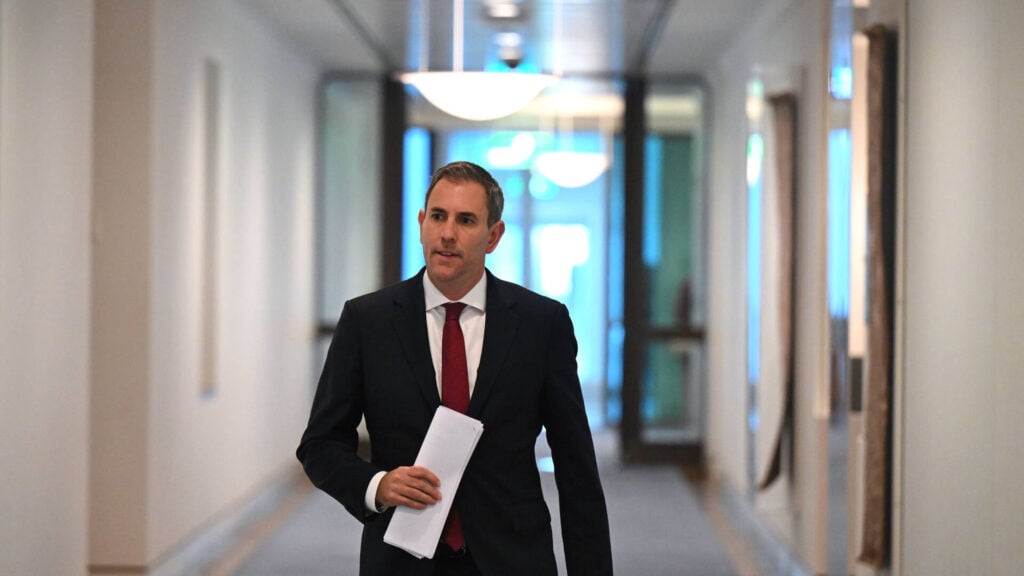Treasurer Jim Chalmers will open his long-awaited economic reform roundtable on Tuesday, following weeks of build-up. Over three days in Canberra, key figures including former Treasury secretary Ken Henry, ACCC chair Gina Cass-Gottlieb, ACTU secretary Sally McManus, Business Council of Australia chief executive Bran Black and other leaders will meet to explore strategies to improve Australians’ living standards. This marks a potentially decisive moment in the nation’s fiscal policy landscape.
Beware of rhetoric
The rhetoric of “national conversation” and “collaborative design” sounds compelling; however, history warns us that summits can easily become consensus theatre—politically safe, economically cautious, and finally inconsequential.
If the government is serious about reshaping the tax system for the many and complex—local and global—challenges ahead, the summit must be a crucible for real reform. If it is just another talkfest that leaves the tax code as entangled, unfair, and obsolete as ever, then it is a costly waste of time.
The case for reform is overwhelming
Australia’s tax system has long been criticised for its over-reliance on volatile and narrow bases. Company tax revenue is disproportionately dependent on a handful of large corporates and a concentrated set of industries—most notably resources. Personal income tax, meanwhile, carries an unsustainable share of the load, with bracket creep steadily eroding wage growth in real terms. On the consumption side, the GST remains frozen in both rate and base since its inception in 2000, meaning its real economic footprint has shrunk while fiscal demands have risen.
Layered atop this are inefficiencies, distortions, and inequities. Capital gains tax concessions disproportionately benefit higher-income households. The complexity of the small business tax regime—despite the repeated promise of “simplification”—remains a deterrent to compliance. Superannuation tax concessions, framed as retirement savings incentives, have become vehicles for intergenerational wealth transfers. And the federal–state tax interface remains riddled with duplication and misaligned incentives, particularly in stamp duty and payroll tax.
Political reality: The Summit as a risk management tool
The planned roundtable is politically astute. It signals consultation, diffuses ownership of unpopular measures, and creates a forum where difficult options can be floated—all under the cover of collective deliberation. Consensus is useful for a government conscious of its electoral cycles, and big reform risks backlash, but inaction risks accusations of policy drift.
However, political incentives can create structural weaknesses. The guest list—expected to include representatives from business, unions, academia, the not-for-profit sector, and state governments—may reflect a diversity of views; nevertheless, it also magnifies the risk of lowest-common-denominator results.
Special interest vetoes have sunk ambitious tax reform before. The Henry Tax Review of 2010 is a cautionary tale. The review’s 138 recommendations, lauded by economists, were largely ignored by politicians and forgotten. In effect, Australia maintains the same structural vulnerabilities more than a decade later.
Key reform frontiers the Summit must reach
If the roundtable is to be more than symbolic, it needs to engage directly with the politically fraught but economically essential questions.
1. Broaden and raise the GST
The GST’s narrow base—excluding fresh food, health, and education—combined with its unchanged 10 per cent rate is a fiscal anomaly. Australia’s GST is low by OECD standards, and its design leaves substantial efficiency and equity gains untouched.
A broader base at a higher rate, paired with targeted compensation for low-income households, may deliver a more stable revenue stream while reducing distortive reliance on personal income tax.
2. Rebalance personal and company tax
Australia’s 30 per cent corporate tax rate is high by regional standards, even after the partial reduction for small businesses. While headline rate cuts are politically challenging, there is a real need for incremental reforms which accelerate depreciation, adjust thin-capitalisation rules, and tighten multinational profit-shifting safeguards. Such reforms could improve competitiveness without triggering a race to the bottom.
3. Revisit capital gains and negative gearing – Include 50 per cent CGT discount
Few areas are as ripe for reform—or as politically charged—as Australia’s treatment of capital gains. The current 50 per cent CGT discount for individuals and trusts, introduced in 1999 to replace indexation, halves the taxable gain on assets held for more than 12 months. The original rationale was to simplify the law and compensate for inflation, yet over two decades it has become a lightning rod for criticism.
Economists, housing advocates, and treasury analysts have long pointed to how the 50 per cent CGT discount has a regressive impact. The lion’s share of the benefit flows to higher-income earners, with significant distortions in housing markets when paired with negative gearing.
Critics argue it encourages speculative investment, inflates property prices, and undermines housing affordability for first-home buyers. Talk within policy circles is that the government may consider reducing the discount to 25 per cent, reintroducing cost base indexation, or applying a smaller concession to new assets acquired after a future date. Even these partial reforms could raise billions in additional revenue while sending a signal that the tax system no longer rewards speculative gains so generously.
Opponents warn of unintended consequences—for example, by taxing nominal gains in full without inflation adjustment, they say this risks penalising long-term investment and creating a “lock-in effect” where investors hold assets simply to defer tax. Also, for retirees who rely on asset sales outside superannuation, any abrupt change could upend financial plans.
Any move here must be carefully staged and harmonised with broad housing market measures. A well-designed reform—phased in prospectively, and with clear transitional rules—could achieve more fairness without shocking markets.

4. Replace stamp duty with land tax
Economists across the spectrum—supply- and demand-focused—agree that stamp duty is one of the most distortionary taxes in Australia. Transitioning to a broad-based annual land tax may improve mobility, encourage optimal land use, and provide a predictable revenue stream. The challenge is political. Existing homeowners—particularly in high-value urban areas—will resist new annual charges, even those offset by reduced transaction costs.
5. Superannuation concessions
The superannuation system’s tax treatment is generous to higher-balance accounts, which function as a wealth shelter. Reform could involve capping the earnings that benefit from concessional rates and redirecting savings towards measures that improve retirement income adequacy and fairness.
The Federalism Factor: States in the Room
Serious tax reform must grapple with Australia’s special fiscal federalism. States control significant tax levers—stamp duty, payroll tax, land tax—yet they are dependent on Commonwealth grants, much of it tied to GST distribution.
The summit presents an opportunity to revisit vertical fiscal imbalance—or simply, the tax and spending mismatch between states and Canberra. Without state buy-in, key reforms such as the stamp duty–land tax transition or GST changes will remain aspirational.
Public trust is at the core of any reform
Tax reform in Australia bears a trust deficit. Voters believe “reform” is a euphemism for new taxes or raised taxes without improved services.
The government must counter this perception by framing the summit as a blueprint for fairness, not just fiscal arithmetic. The government, if serious, needs to be seen to be transparent and make the case simply to the Australian people. It must try to explain the need to reform our tax system for the sake of better schools, health care, roads, transport, and especially affordable and accessible housing for all Australians. Class war—envy and loathing—needs to be absent from the rhetoric. It needs to be reform that benefits all Australians regardless of access to wealth. Discussion papers published in advance, clear features and reports in media, including multicultural media, the release of detailed costings of all proposals, and a real commitment to measurable and evident outcomes that benefit all citizens and future generations.
It also requires a commitment to distributional equity—the very Australian sense of a ‘fair go for all’. If changes to GST and other consumption taxes are on the table, the summit must discuss real compensatory measures—enhanced transfer payments, adjustments to income tax thresholds, and targeted social spending. Without these, reform will be politically toxic and socially regressive.
A coalition for reform made of business, labour, and civil society
For reform to succeed, the government must cultivate an unusual coalition of business groups who see efficiency gains, unions who secure equity protections, and civil society advocates who ensure no community, especially the vulnerable, is left behind.
This coalition may seem fragile but not impossible.
The success of the reformist Hawke/Keating government was the 1985 Tax Summit—which introduced capital gains tax and fringe benefits tax—underpinned by an alignment of business, unions, and tertiary sectors, despite its imperfections.
Later, the of Australia Reconstructed report, 1987, worked to transform Australia. A coalition of politicians, business, unions, welfare, and academia travelled across the world looked at various production, employment, training, and industrial relations—and came back to usher the Hawke, Keating, (Dawkins and Button) reforms that stopped Australia from becoming a “banana republic,” to quote Paul Keating.
It ended demarcation disputes between unions, and wildfire strikes, by amalgamations of small unions into corporate structures, it swapped inflationary wage demands for set 3.5 per cent per annum rises, and increased social supports by unions and business. The report ushered in a new tertiary and training system to meet the needs of then high unemployment. It created the superannuation system, and Australia now has some of the largest super funds in the world acting as bulwarks in global crises—like the Global Financial Crisis and the COVID-19 Pandemic.
Today’s context is different. Fractured, bruised, and increasingly splintering globalisation, hyper and diverse digitalisation, cheaper tech, a sea of new media platforms, and of course AI’s hyper-rapid development, have ended the fantasy of a global rules-based free market. There is an emergence of regional zones of interest—politically, economically, and militarily—in North Africa, Southwestern Africa, Southeast Mediterranean, Near and Central Asia, ASEAN, and the Pacific Islands Forum. The rise of regional conflicts, and superpower interests—of the US, China, Russia, and India—has ensured that we all look less to global multilateral institutions such as NATO, the UN, and the OECD. Nations seek support and comfort, economic and political certainty, from closer, aligned geo-cultural jurisdictions.
The turning inward of the world’s preeminent superpower, the United States, has been noted by all nations, not least Australia. Climate change, with now evident impacts on how we live and work, is already reshaping economic activity. Social and digital media companies’ fiefdoms and their tax avoidance, new digital platform economies, the need to have adequate defences, and access to rare minerals and energy—added to the cost of climate transition—demand a system that is fair, efficient, and resilient to rapid structural change.
Avoid the incremental trap
The greatest danger is that the roundtable produces merely a bland menu of overly modest, piecemeal changes—a tweak to thresholds here, an adjustment to deductions there—while leaving the structural weaknesses intact.
Incrementalism may be politically comfy, but it is economically inadequate and has bad long-term consequences. The demographic pressures of an ageing population, the capital needs of the net-zero transition, and the volatility of resource-dependent revenue streams require bolder action.
Blueprint for success
To avoid repeating past failures, the summit must:
– Set explicit reform objectives grounded in long-term fiscal sustainability and equity.
– Commit to evidence-based policy, with proposals evaluated against economic modelling, distributional analysis, and international best practice.
– Publish a reform roadmap with timelines, legislative steps, and accountability mechanisms.
– Insulate the process from short-term politics, potentially through an independent tax reform commission tasked with translating summit consensus into draft legislation.
And in the end, the real cost of caution
The proposed roundtable is a welcome acknowledgment that the tax system is no longer fit for purpose. However, a summit is only as valuable as the political will for what may be unpopular reforms that follow.
If this exercise becomes another overly choreographed performance about consultation and bonhomie only, without clear commitments, we will have squandered a chance to confront our economic future head-on.
Courage is needed to broaden the GST, to rebalance the burden between income, consumption, and wealth, and to dismantle entrenched concessions—such as the overly generous CGT discount—that favour the well-off. Honest discussion with the citizenry is essential—Australians must know that fairness might mean paying more in the short term for long-term security and prosperity.
Only the boffins and media may remember the speeches from the summit—but all will remember if the government used this moment to build a tax system that is simpler, fairer, and more resilient—worthy of the Australian people’s trust.
*Tony Anamourlis is a tax law specialist in multinational transactions, negotiating with the Commissioner of Taxation and other regulators and is a regular contributor to Neos Kosmos.









